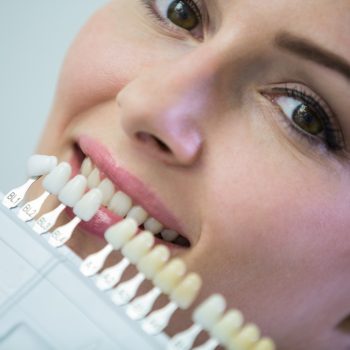
Attachments in the Invisalign System: The Invisible Key to a Perfect Smile
- On 13 February, 2024
In the world of modern orthodontics, technological advances have revolutionized the way dental problems are corrected. One of the most innovative and popular systems today is Invisalign, a discreet and effective alternative to traditional braces. However, to achieve optimal results, small attachments called “attaches” are often used. These attachments, although barely visible, play a crucial role in the success of Invisalign treatment.
What are Invisalign attachments?
Invisalign attachments are small pieces of Bisphenol A-free, transparent dental composite that adhere to the teeth as part of the invisible orthodontic treatment. Unlike metal braces, which are visible and often uncomfortable, Invisalign attachments are virtually imperceptible and are designed to blend with the natural color of your teeth.
What is the function of attachments in treatment?

The main function of attachments is to provide additional support points for Invisalign aligners. These small “buttons” help the aligners fit better on your teeth, allowing for more precise and controlled movements. Attachments also help correct certain types of malocclusions that can be difficult to treat with aligners alone.
How are Invisalign attachments placed?
The process of placing the attachments is relatively simple, non-invasive and not painful. First, the orthodontist cleans and dries the surface of the teeth. Then, apply a soft adhesive gel before placing the attachment in the predefined location. Once in place, the orthodontist uses a special light to harden the composite and secure the attachment to the tooth.
How do attachments affect the aesthetic aspect of the treatment?

One of the main concerns of patients who choose Invisalign is the aesthetic aspect during treatment. Fortunately, the attachments are designed to be as discreet as possible. Although they are visible up close, especially if you actively look for them, the attachments blend with the natural color of your teeth and are much less conspicuous than traditional ceramic braces.
Are the attachments painful or uncomfortable?

Absolutely. Most patients find Invisalign attachments comfortable and barely noticeable once they get used to them. You may experience slight discomfort at first, especially when biting or brushing your teeth, but this is usually temporary and disappears in a short time. Compared to traditional braces, Invisalign attachments tend to cause less irritation and injury to the mouth.
How do attachments affect the Invisalign treatment process?
Attachments play a key role in the effectiveness of Invisalign treatment. By providing additional support points, they allow the aligners to move with greater precision and control. This can speed up the correction process and help achieve optimal results in less time. Additionally, attachments allow a wider variety of dental problems to be addressed, meaning more patients can benefit from Invisalign treatment. If during treatment you lose an attachment, it is not urgent to go to the consultation but it should not take long until it is replaced.
How are attachments cared for during treatment?

Maintaining good oral hygiene is essential to ensure the success of Invisalign treatment and preserve the integrity of the attachments. It is important to brush your teeth after every meal and floss regularly to prevent plaque and bacteria buildup around the attachments. It is also recommended to avoid sticky or hard foods that could damage the attachments or aligners.
Attachments are an essential component of the Invisalign system that plays a crucial role in the effectiveness and success of the treatment. Although small and discreet, these attachments provide the support necessary for the aligners to fit properly and allow precise tooth movements. With its help, Invisalign offers patients a comfortable, aesthetic and effective solution to correct a wide range of dental problems, helping you achieve the perfect smile you have always wanted.


